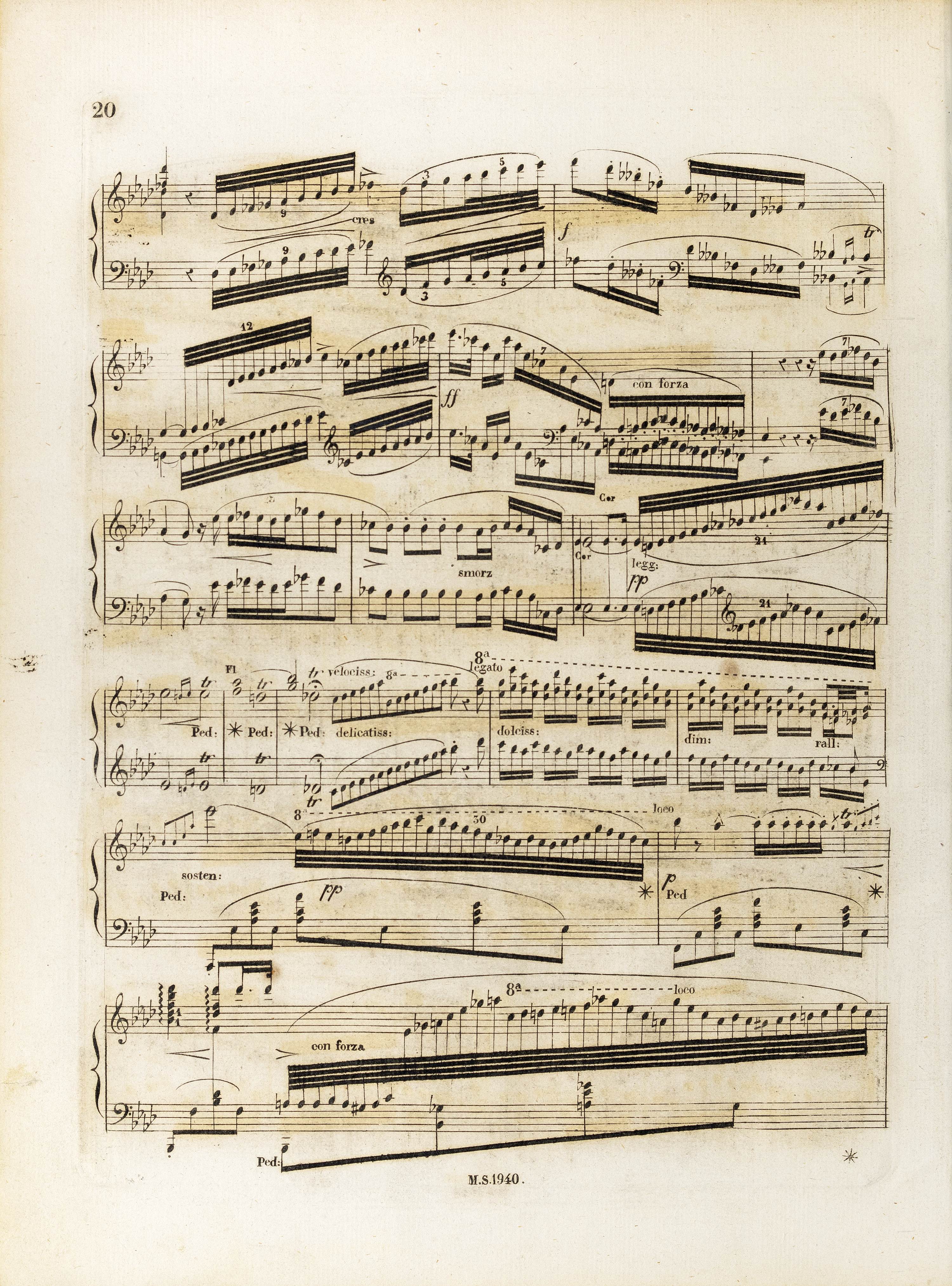



Interpretation of three accents written in A at the beginning of the bar is problematic. The first, slightly bigger and written in a clearer manner, falls under the g2-b 2 third of the orchestral reduction, the second – under the trilled d
2 third of the orchestral reduction, the second – under the trilled d 2 minim. In spite of the fact that both signs are written one after another, they practically concern the same strike, which, however, can be considered to be logical, since it is a consequence of the layout in which the orchestral part is written before the solo part. In turn, it is unclear to which element the third sign should apply, falling during the trill. The source of this ambiguity may be an inaccurate or unfinished correction – the second and third signs are written in a place where something had been erased.
2 minim. In spite of the fact that both signs are written one after another, they practically concern the same strike, which, however, can be considered to be logical, since it is a consequence of the layout in which the orchestral part is written before the solo part. In turn, it is unclear to which element the third sign should apply, falling during the trill. The source of this ambiguity may be an inaccurate or unfinished correction – the second and third signs are written in a place where something had been erased.
All signs were omitted in the editions, except for GE2, which reproduced one of them, corresponding to two smaller ones in the notation of A.
In the main text, we interpret the third sign as a diminuendo, which undoubtedly is required here between the accent at the beginning of the bar (ending the two-bar crescendo) and the  after the last trill.
after the last trill.
Compare the passage in the sources »
category imprint: Graphic ambiguousness; Differences between sources
issues: Errors in GE, GE revisions
notation: Articulation, Accents, Hairpins





 suggested by the editors
suggested by the editors